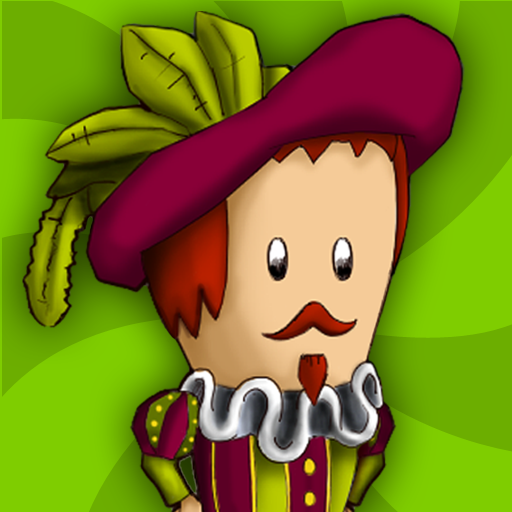
Reconstruct The World In Monarchia: Second Dawn

Monarchia: Second Dawn ($1.99) by RebelDwarf is a 3D medieval city building game, which is similar in nature to the Harvest Moon series.
In Monarchia, there’s been a horrific Krolan attack that decimated the land and its inhabitants, sending the survivors into hiding. This event was called the Breaking, and four years have passed since it’s happened.
You play as the lone surviving commander of an annihilated army, who has stumbled upon a clan of hapless peons. It’s your job to rebuild their town, whip them into shape, and reconstruct the world, farm by farm.

The game starts with a short tutorial, beginning with navigation. To move across the map, slide a finger across the screen. Rotating is done using the bar on the left, the bar on the right controls tilting, and zooming in and out is as simple as using pinch gestures.
Screen tilting is also automated via the accelerometer, but I found it disorienting to have the screen constantly moving from left to right as I tried to control my townspeople and construct buildings. It also seemed to slow the game down, but luckily, it can be turned off using the options menu.
Like other city building games, Monarchia starts with gathering materials. After a town hall is constructed, tap on a tree or a mine to assign a peon to begin working there, using wood and stone, respectively.
The construction materials are used to construct houses, farms, ranches, and other buildings like taverns and hospitals to keep townspeople happy and healthy.
There are levels to complete, with goals like building four houses, two farms, two ranches, and so on. When the goals are met, the game advances to the next level, but you keep your town, always building on what you last created. This can have a serious disadvantage at later levels, because there is no going back, and if you make a mistake, it’s an entire game ruining mistake.
Houses and buildings are created by selecting the build button in the bottom right corner and choosing edifice from one of six menus. Then you can place your selection on the grid-like map in any open spot.
Continual construction and growth of your town is the basic goal in the game. New townspeople are recruited automatically at a rate that’s controlled by the overall happiness and health in your town. Once a townsperson has been assigned to a job, such as woodcutting, ranching, or farming, they can’t be reassigned.
This is a serious problem during the third level, where wolves attack the town and you’re instructed to craft garrisons and towers. When a building is empty, it’s non-functional, and I found that recruitment did not happen fast enough to create enough soldiers to defeat the wolves.
The population of my town slowly declined as they were eaten by wolves, and there was nothing to do but watch. My townspeople merrily went about their way, gleefully collecting wood and stone, as wolves tore them to pieces.
I restarted this level, and the game, multiple times (a significant time investment), but I only managed to keep my peons alive once. And after I defeated the wolves, my population continued to inexplicably decline, so I never did pass the third level.
As the game progresses, if you’re a better city planner than I am, you’ll continue to transform your town into a thriving metropolis. Eventually, you will be able to trade with allies and defeat enemies with powerful armies.
There is no automatic save, but it’s a good idea to use the save button in the options menu in case things go catastrophically wrong. As I mentioned before, there are no separate levels in the game, which I thought was a disadvantage. There is no going back, and when you make a mistake, it’s not a matter of simply restarting a level - it’s the end of the game. Even between saves, there can be a significant time difference, and by the time you realize your error, it’s way too late to go back.

As you can probably tell, I was frustrated with this game. It felt buggy, and while I liked the 3D graphics, the engine felt slow and choppy on my iPhone 4. I spent a lot of time trying to progress in this game without result, and it could definitely benefit from a few changes to make gameplay easier and more consistent.
This game has a solid foundation, and has the potential to be quite enjoyable. Even now, if you start knowing the limitations ahead of time, you will probably be more successful than I was. Don’t overbuild, and always make sure you have a free peasant or two for when you need them for a specific purpose.
I never had a townsperson available when I needed to recruit them for defense, and once they started dying, it was a lost cause. I don’t know why you can’t reassign their jobs, but this is a feature that the game desperately needs, especially because there are caps on the number of resources. You can only gather 160 wood and 160 stone, anything beyond that is pointless, and there’s no way to train townspeople to do another job when you have a sufficient amount.
At one point, even though I was well on my way to fulfilling the objectives, the game inexplicably decided that I lost, without any warning. There was never any mention of a time limit, or any other game-ending objective that I hadn’t reached. I lost a good hour of gameplay, which was frustrating. Additionally, I would have liked to see a progress meter or some kind of indication of how many of the goals I’d fulfilled each level.
If you like games like Harvest Moon, Monarchia: Second Dawn is a game that you may want to take a look at, because it does have a fun fantasy setting and a persistent world, but be aware of the current limitations. Hopefully some updates are incoming, to make a decent game great.









